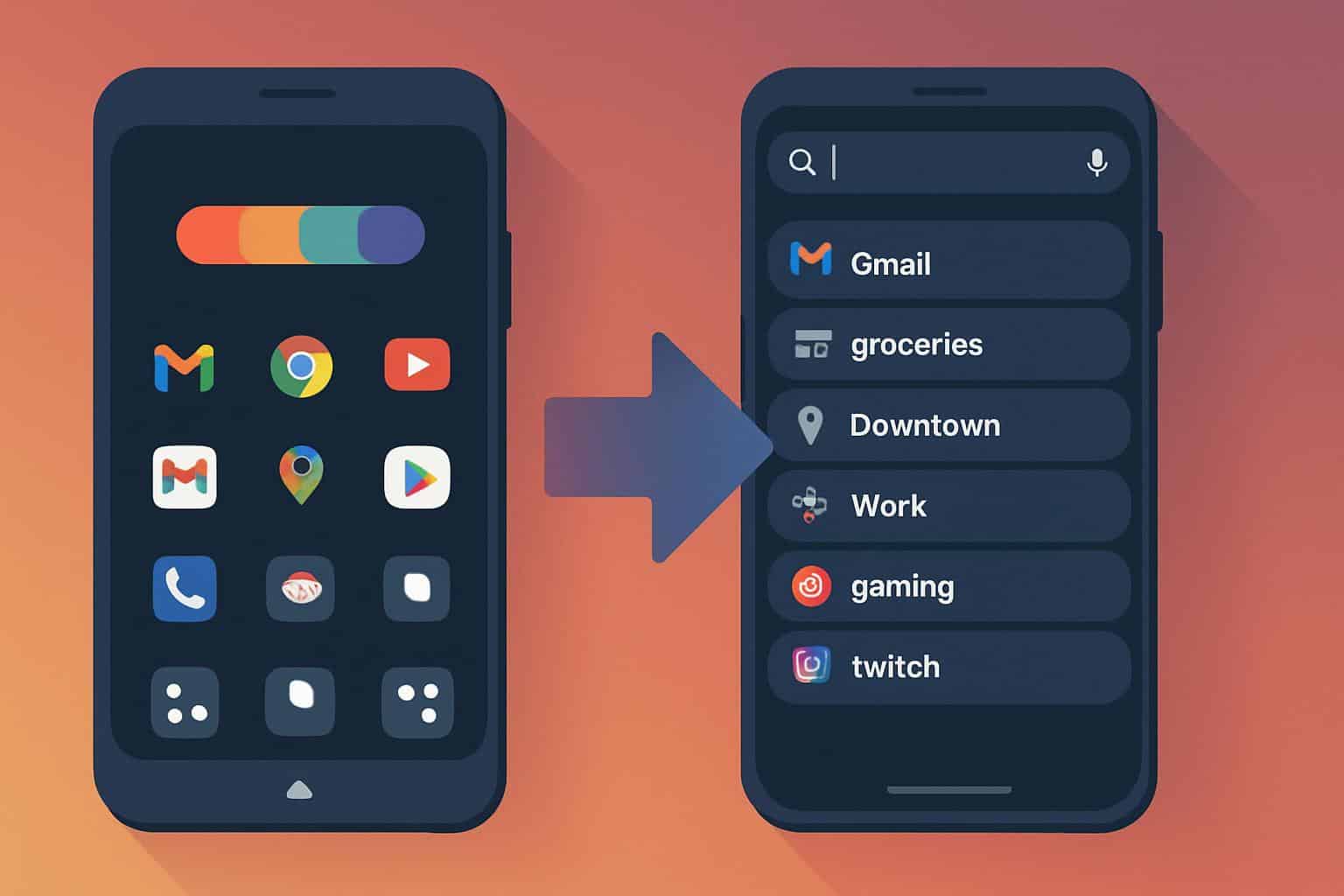Nova Launcher revolutionized the way Android users perceive home screens, but the feature that first led to this perception shift was the universal deep search function powered by Sesame Shortcuts.
So I figured I’d try to make that a thing in my new launcher, which sort of works, with caveats anyone thinking about doing the same should keep in mind.

Why Universal Search Was Nova’s Secret Weapon
Polished icon packs and gestures are nice, but working faster than the choices is where productivity gains truly come in. Sesame’s partnership with Nova dug deeper than app names to show deep links within apps from the launcher search bar, showing Spotify playlists, Slack channels, Reddit communities, Twitch streams, and even Tasker actions. It leveraged App Shortcuts and intents — where available — from Android, then added on its own indexing and ranking based on your habits, so the things you opened were what floated to the top.
That reach counted, because in-app search is decentralized. There are some apps with excellent shortcuts and those that hide useful places behind absurd URI schemes. Sesame was the glue that bridged those fissures with customized shortcuts and learned recommendations. In a practical sense, one query could send me directly to a certain Slack channel or niche playlist without having to open up the parent app and search for it.
How I “Pulled” It to a Modern Launcher Setup
I experimented with three different ways to graft Sesame-style search into a new no-Nova setup. The best approach is native support: some third-party launchers, like Hyperion, Lawnchair, and Niagara, get behind a hook that allows Sesame to listen for search queries. The result is that when that handoff works properly, the results look like the launcher shipped them.
When basic wiring fails, there are gestures. A lot of launchers allow you to remap a search button, or even just swipe up or double-tap. I quickly bound the search action on my launcher to Sesame’s activity. It felt natural, and because gestures are local to the home screen I was able to tweak behavior without side effects elsewhere.
The fallback is a widget. Sesame offers a small search box that can be swiped to and fro and pinned above or instead of the launcher’s bar. It’s not as much of an aesthetic unity in minimalist setups, but functionally it gets you to those deep links just the same. For older devices, Sesame also provides optional screen-edge and lock-screen triggers — but they operate based on accessibility behaviors that newer versions of Android have the potential to restrict.
What Worked and What’s Breaking with Sesame Search
When it works, though, it still feels eerily fast. Questions that you’d need to tap multiple times inside apps resolve in one step, and Sesame’s ranking works well (and it learns rapidly). My favorite Slack channels became available after a few launches, and with custom links I can invoke an individual browser profile or an advanced YouTube player within seconds.

But the cracks show. The independently developed Sesame app has not been actively maintained in years, and the Android platform continues to evolve. App Shortcut APIs change, background execution restrictions become tighter, and intent handling differs between OEMs. On more recent phones, I’ve encountered lost shortcuts, half-baked results for recently updated apps, and sometimes cold-start lag when the system decided to really put the indexer to sleep.
API drift is the main culprit. After significant redesigns, some apps replaced or phased out deep links, which leaves Sesame pointing at doors that no longer exist. We gate some views behind dynamic routes that are not made public shortcuts by others now. Which is to say: the power ceiling, really, is a bit lower than it once was, particularly with fast-moving services.
Security and Maintenance Caveats for Sesame Shortcuts
There is also the issue of trust. On Reddit, after Branch purchased Nova Launcher, the developers of the app noted that future work would be on how it integrates with Nova rather than anything as a standalone build. In other words, the code that you’re installing on your machine today is more or less frozen. A final, publicly available version with zero trackers is both reassuring and a sign of possibly unmaintained software bridging into the activities of other apps that might raise an eyebrow.
Authorizations are purposefully broad: in order to index shortcuts and jump routes, Sesame has to be able to see what apps you have installed and work with deep links. If you’re all hardcore about shrinking the attack surface, that’s a legit reason to decline. It is a wiser compromise to experiment on a secondary device, restrict which apps you will grant access to, and disable any unused integrations.
Should You Do It on Your Primary Android Phone?
If you value speed and live in chat, music, and automation apps, even just slapping Nova’s universal search brain onto a new launcher will deliver a noticeable jump. But the maintenance freeze, added to this stuff about modern app-making not really meshing with older integration points, was getting too out of sync for me; I can’t say that it’s a must-install on a primary phone.
The better long-term path is for launchers to build native, privacy-respecting device-wide search with modern components like Jetpack AppSearch and the public App Shortcuts framework if they would like deeper destinations to be exposed. Pixel’s on-device search and a couple of third-party launchers are edging in this direction, but there’s an opportunity to push harder with learned ranking and more comprehensive deep-link catalogs.
I’m glad I brought Nova’s best trick along with me — it really helped show how much time a good search can save — but I will definitely keep it on a short leash and hope the next generation of launchers can mimic whatever made that one so special.

